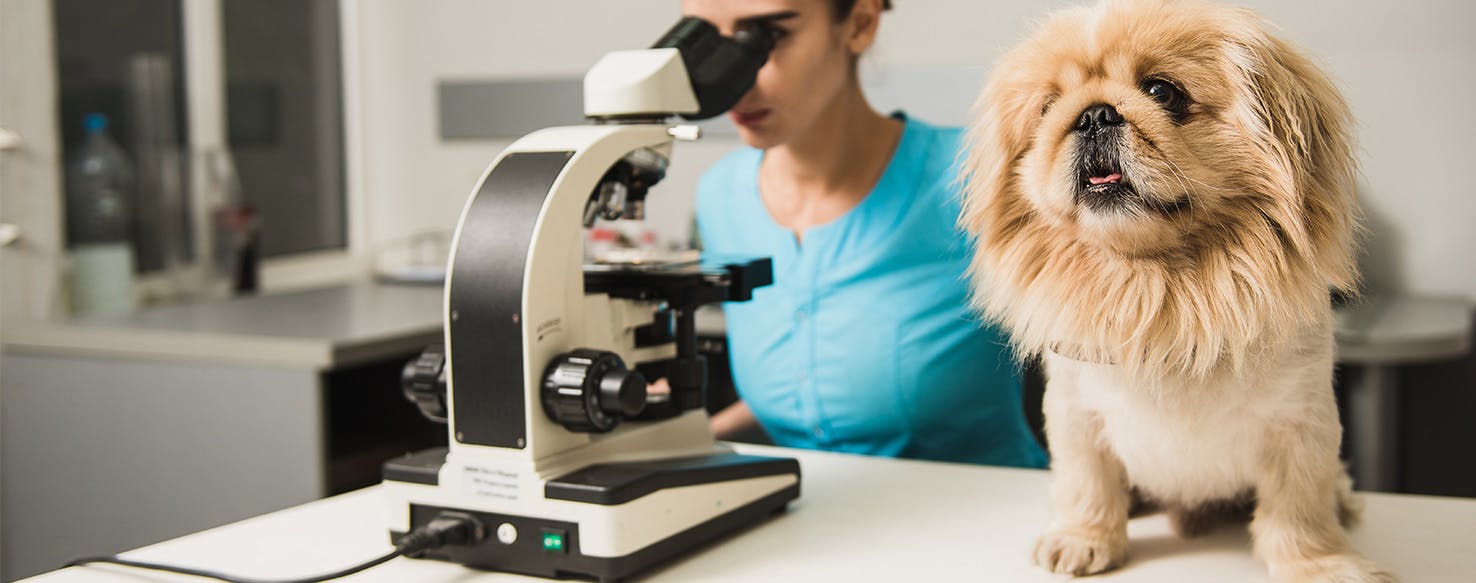Have you ever tried to catch your dog's pee in a cup? Doesn't sound like much fun, does it? While the activity isn't exactly most people's idea of a good time, many caring owners have attempted this feat to collect a urine sample for their vet. As the majority will discover, it's easier said than done. And some dogs refuse the process altogether.
So what do you do if your dog simply won't cooperate? Instead of creeping up on your pooch every time she pops a squat, you could ask your vet. One method that is offered at a lot of clinics is cystocentesis. Cystocen-what now? In simpler terms, the veterinarian removes urine from inside the bladder so it can be sent for testing.
How is this done, you ask? Below is a step-by-step guide of how cystocentesis works.
Step 1: Fill Up The Bladder
Because urine is going to be collected from inside the bladder, there’d better be some in there! Your vet may advise you not to let your dog empty their bladder right before the appointment, or there may not be enough liquid for testing! Make sure your pupper has a good gulp of water before the appointment, especially if it's an early morning spot.
Step 2: Clip and Clean
Your vet will pick an area on your dog's abdomen where the bladder will be easily accessible. If you have a short-haired breed, this section may already be hairless. If your pooch's 'do is longer, the vet may shave a small patch of hair off. The site will then be disinfected to prevent any bacteria on the skin from getting into the sample or the bladder.
Step 3: The Flip and Spread
This step sounds like it wouldn't work on any dog, but surprisingly, many a pupper obliges without too much resistance. Two extra pairs of hands will be needed to hold your fur-baby’s front and back legs in the air, gently spread from front to back. If the doggo stays calm and doesn't wiggle around, you're good to go on with the procedure!
Step 4: Feeling Around
Your vet is now going to get a little handsy. They have to locate the full bladder so that they can be accurate with the collection. If the bladder is hiding, some vets will try to do the cystocentesis blind. Make sure to talk to your vet as this is happening. Sometimes it's better to try a different method than to stress out your four-legged friend.
Step 5: Poke and Pull
The last and most important step is the collection itself. Using a big syringe able to hold lots of liquid, the vet will poke through the skin (and hopefully right on through the bladder wall). If the location is right, as the plunger is pulled, the chamber will fill with your pooch's yellow yield. If the sample is deemed good, it can then be sent for testing!
It's a Helpful Procedure
Urine samples play a key role in diagnosing your canine companion. A whole heap of health problems can be identified from urine, including kidney disease, bacterial infections, and cancer.
So if sticking your hands where the sun don't shine sounds unappealing to you, it may be time to discuss cystocentesis with your vet. As long as your pup stays calm, it can be a simple way to collect a perfect urine sample.


